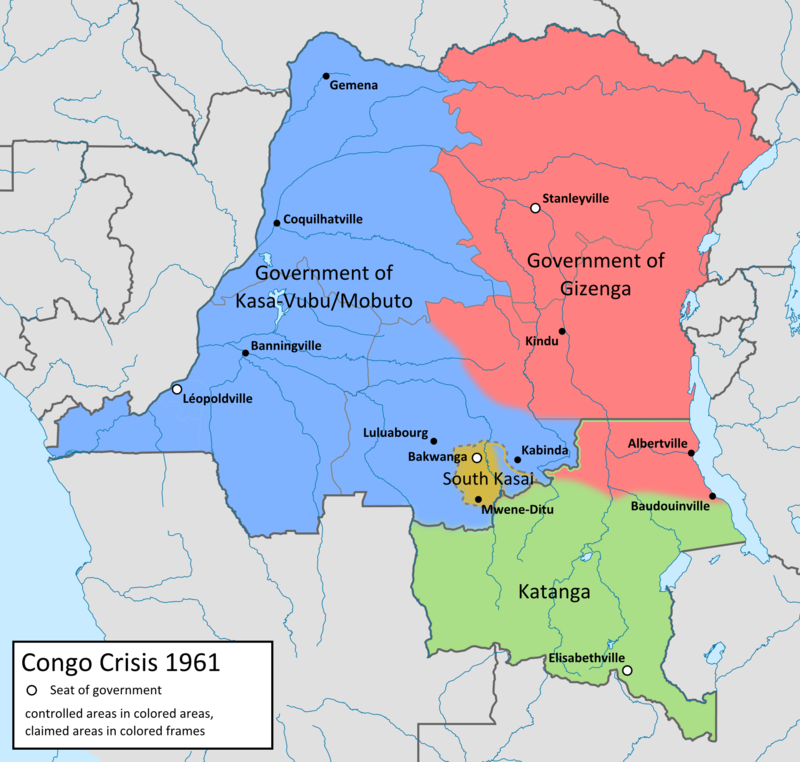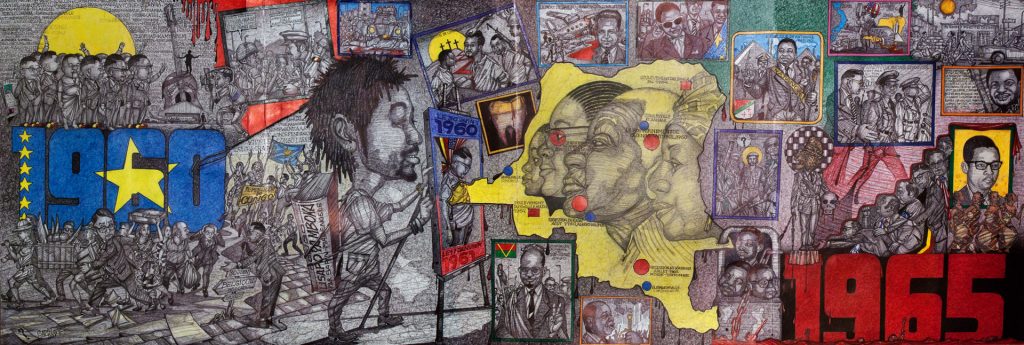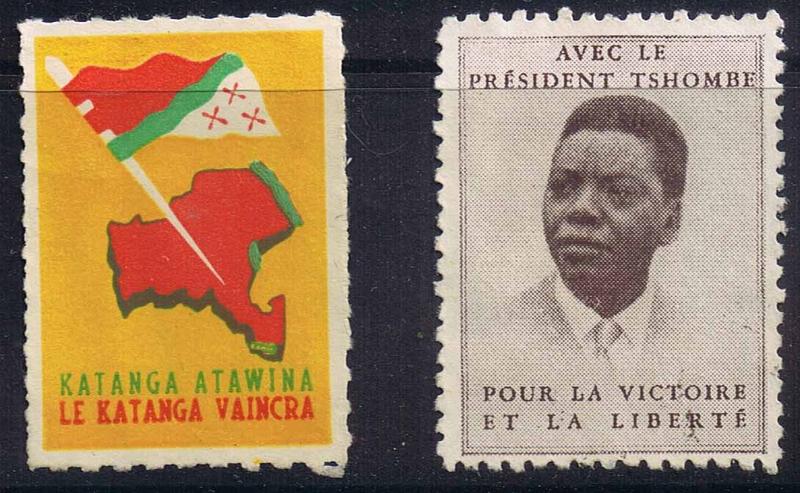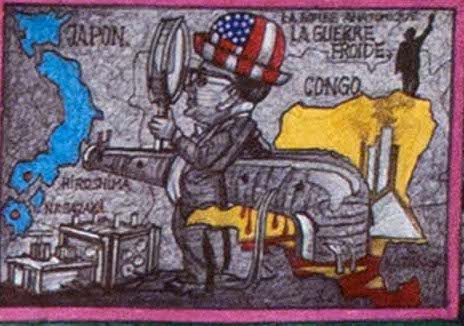The state of Katanga played an integral role in the Congo Crisis in relation to both the internal and external factors that heavily contributed to the crisis itself. The vast ethnic and linguistic diversity of the Congo did not stop it from proclaiming independence from Belgium on the 30th of June, 1960 with the infamous Lumumba speech, under the borders understood through the Westphalian idea of the Congo nation state as drawn up at the Berlin Conference of 1884-85. This immediately posed problems for the newly independent Congo and those who sympathised with the nationalistic cause which had gained the strength to resist colonialism, given that ethnic tensions, and perhaps more potently, differentiation in access to resources across the country differed significantly. Katanga province, found in the South-East of the Congo as demonstrated above, is the perfect example for this contestation that would perform itself over the several years that make up the Congo Crisis. Given that Katanga plays home to an abundance of natural resources, as well as countless factions of ethnic groups it also prevented itself as ripe for foreign involvement on those who sought the demise of Patrice Lumumba and the newly independent and free Congo. When all these factors are combined together, it comes as little suprise that it didn’t take long for things to kick off in Katanga following June 1960, and it is with this that one introduces Moïse Tshombe, leader of the CONOKAT party that forged an alliance with residing Belgian settlers which would go on to declare indepedence from the new Congo and the attempt for Katangan secession had begun.
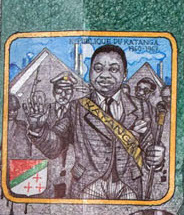
Katanga Succesion portrayed in Sapin’s painting
Moïse Tshombe, as depicted above in Sapin’s painting, is an incredibly important figure in both the historiography of Congo’s recent history, and that of the Congo Crisis. A former associate and close man of General Mobutu, who would later seek the extradition and imprisonment of Tshombe, Moïse Tshombe’s political party CONOKAT gained control of the Katangan parliament following elections in May 1960, just before the eventual independence of Belgian Congo. Having overseen political independence which placed Patrice Lumumba in the position of Prime Minister of Congo, Tshombe along with his allies, of whom we will come on to, feared that the accumulation of power shifting slowly towards Lumumba and his “radical” ideology posed a major threat to the CONOKAT movement and that of the Katanga province as a whole, alongside all those who held an interest in the province and its capabilities in the form of production and access to natural resources. Lumumba in his famous speech spoke very frankly about what King Leopold II and Belgium had done in Congo alongside the importance of full, true independence in order to break away from the shackles of colonialism, BOTH politically and economically. Tshombe on the other hand wasn’t so prepositioned with such an ideology, but rather had allies and common interests with a number of highly influential Belgian settlers who resided in the province of Katanga, and given that Lumumba’s agenda prompted fear of a backlash towards the greater interests of the Belgian minority, an argument was made by CONOKAT that Lumumba’s influence over Katanga would grow to the extent that CONOKAT representatives would go on to lose their own positions of power and be replaced by the staunch nationalism espoused by Lumumba (Hoskyns, 1965). This threat invented itself through the guise of ethnic factionalism and the argument was stirred up across Katanga by the CONOKAT and Tshombe that Lumumba was heavily backed and influenced by the Soviet Union, and that this wave of Congolese nationalism espoused by Lumumba was a full front attack on the indigenous Katangan population and a violation of their rights to self determination, and THUS, the proclamation for Katangan independence and its secession was made.
Whilst this argument was made by Tshombe and his supporters, others in the historiography of the Congo Crisis have been less sympathetic to the Katangan secession cause and the ethnographic influences that led to the attempted secession , rather highlighting the importance of Belgian settlers to the Katangan economy and the very imminent threat that a mass exodus in the region of business and these “settlers” would do to both Tshombe’s personal interests and the control of significant resources held by occidental forces, which evidently Lumumba had his eyes upon. Historiographies from the likes of Lefever and Chomé, the latter writing less than a year after the Congo Crisis of the 60s and before the death of Tshombe, who are keen to promote the idea that ethno-nationalism has been overstated in the case of Katanga’s secession attempt, and rather shed blame on foreign involvement from both state sponsored individuals as well as corporations with vested interests in Katanga such as the UMHK (Union Minière du Haut-Katanga), an Anglo-Belgian mining company who had direct access to Tshombe and his position of power, whereby taxes imposed by Lumumba as Prime Minister were actually diverted to Tshombe himself in order for the continual support of secession and thus the interests of foreign businesses on Katanga’s natural resources (LeFever, 1965; Chomé, 1966). This plays hand in hand with Tshombe’s desire to court the Belgian settlers of Katanga as Chomé goes on to proclaim that the ventures of secessionism stemmed from the wishes of these settlers to guard their interests, and that secession appeared weak even in the eyes of the United Nations due to the lack of total support shown by the various Congolese ethnic groups that make up Katanga, despite the financial capabilities of Katanga and its supporters (Chomé, 1966).
This part of Sapin’s paining found in the top right hand corner is there to represent the importance of Katanga province in the history of the Congo Crisis, as well as that of global warfare. During World War II, the United States of America dropped two atomic bombs over the Japanese cities of Hiroshima and Nagasaki in 1945. Congo and Katanga play an important part in this story as many of the materials used in the creation of these nuclear weapons came directly from Katanga’s natural resources, and thus it comes as little surprise that the threat of losing this incredibly rich region of Congo was too big for Western powers to ignore, despite Congo having won its independence in June 1960. Sapin doesn’t forget to mention this as being an important part of the Congo Crisis and it serves as a timely reminder of how important Congo was/is to the world and the extent to which the the Crisis and Katanga’s short lived secession impacted the international political and economic sphere.
Sapin’s depiction of Katanga’s secession attempt also derives itself from these external influences as seen in the background, with Belgian and American interests clearly evident in a clever manner which almost directly suggests Tshombe was merely a puppet for these Occidental interests. In the far left of this depiction, one also sees Katangan troops, who not only would go on to fight UN deployed forces, but under the eyes of both Mobutu and Tshombe, these forces would play a pivotal role in the death of Patrice Lumumba.


